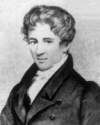 | TODAY IN SCIENCE HISTORY NEWSLETTER - 6 APRIL |
| Feature for Today |
 On 6 Apr 1748, official excavation began at Pompeii, nearly 17 centuries after it had been buried in volcanic ash by the eruption of Mount Vesuvius. On 6 Apr 1748, official excavation began at Pompeii, nearly 17 centuries after it had been buried in volcanic ash by the eruption of Mount Vesuvius.The manuscript record kept by excavators has noted for this day (in translation) that “In the excavations we have begun at Torre Annunziata, the first thing which we have discovered is a painting 11-ft long and 4�-ft tall.” It was to be cut out for the king, a zealous collector. Preservation of the ruins and knowledge of the history of the people and their lifestyle was not the goal. It was for the treasure trove. By 1755 there had been substantial antiquties collected. Read a description about some of them in this Account of the late Discoveries, by the Keeper of the Museum Herculanei, (1755). You will notice the enthusiasm for the objects, and the lack of interest in anything else. |
| Book of the Day | |
| |
| Quotations for Today | |
 | "[I doubt that in today's world, I and Francis Crick would ever have had our Eureka moment.] I recently went to my staircase at Clare College, Cambridge and there were women there! he said, with an enormous measure of retrospective sexual frustration. There have been a lot of convincing studies recently about the loss of productivity in the Western male. It may be that entertainment culture now is so engaging that it keeps people satisfied. We didn't have that. Science was much more fun than listening to the radio. When you are 16 or 17 and in that inherently semi-lonely period when you are deciding whether to be an intellectual, many now don't bother." (Response when asked how he thought the climate of scientific research had changed since he made his discovery of the structure of life in 1953.) |
 | "How often people speak of art and science as though they were two entirely different things, with no interconnection. An artist is emotional, they think, and uses only his intuition; he sees all at once and has no need of reason. A scientist is cold, they think, and uses only his reason; he argues carefully step by step, and needs no imagination. That is all wrong. The true artist is quite rational as well as imaginative and knows what he is doing; if he does not, his art suffers. The true scientist is quite imaginative as well as rational, and sometimes leaps to solutions where reason can follow only slowly; if he does not, his science suffers." |
 | "The divergent series are the invention of the devil, and it is a shame to base on them any demonstration whatsoever. By using them, one may draw any conclusion he pleases and that is why these series have produced so many fallacies and so many paradoxes." |
| QUIZ | |
| Before you look at today's web page, see if you can answer some of these questions about the events that happened on this day. Some of the names are very familiar. Others will likely stump you. Tickle your curiosity with these questions, then check your answers on today's web page. | |
| Births | |
 |  James Watson is an American geneticist and biophysicist, born 6 Apr 1928, who played a crucial role in the discovery of the molecular structure of deoxyribonucleic acid (DNA), the substance that is the basis of heredity. For this accomplishment he was awarded the Nobel Prize for Physiology or Medicine with Francis Crick and Maurice Wilkins. James Watson is an American geneticist and biophysicist, born 6 Apr 1928, who played a crucial role in the discovery of the molecular structure of deoxyribonucleic acid (DNA), the substance that is the basis of heredity. For this accomplishment he was awarded the Nobel Prize for Physiology or Medicine with Francis Crick and Maurice Wilkins.  In which decade was the Nobel Prize awarded to Watson and Crick? In which decade was the Nobel Prize awarded to Watson and Crick? |
 |  An American electrical engineer and photographer, born 6 Apr 1903, devised techniques for high-speed photography, which he used as a tool in various scientific applications. An American electrical engineer and photographer, born 6 Apr 1903, devised techniques for high-speed photography, which he used as a tool in various scientific applications.  Can you name this scientist? Can you name this scientist? |
| Deaths | |
 |  Isaac Asimov (1920-1992), a Russian-born American, began his career trained as a scientist, but is known as a prolific author of science fiction and of science books for the layperson. He published about 500 volumes. Isaac Asimov (1920-1992), a Russian-born American, began his career trained as a scientist, but is known as a prolific author of science fiction and of science books for the layperson. He published about 500 volumes. In what discipline was Asimov a trained scientist? In what discipline was Asimov a trained scientist? |
| Events | |
 |  On 6 Apr 1938, Du Pont researcher Roy J. Plunkett and his technician Jack Rebok accidentally discovered the chemical compound polytetrafluoroethylene (PTFE). They found the contents of a cyclinder of the gas perfluoroethylene had turned polymerized to a slippery white powder. Its properties included that it was a solid lubricant in powdered form, was chemically inert and had a very high melting point. It is now a part of products used by everyone. On 6 Apr 1938, Du Pont researcher Roy J. Plunkett and his technician Jack Rebok accidentally discovered the chemical compound polytetrafluoroethylene (PTFE). They found the contents of a cyclinder of the gas perfluoroethylene had turned polymerized to a slippery white powder. Its properties included that it was a solid lubricant in powdered form, was chemically inert and had a very high melting point. It is now a part of products used by everyone. By what trade name is PTFE generally known? By what trade name is PTFE generally known? |
 |  On 6 Apr 1889, George Eastman placed his new camera on sale. On 6 Apr 1889, George Eastman placed his new camera on sale. By what trade name was this camera known? By what trade name was this camera known? |
| Answers |
When you have your answers ready to all the questions above, you'll find all the information to check them, and more, on the April 6 web page of Today in Science History. Or, try this link first for just the brief answers. Fast answers for the previous newsletter for April 5: break the sound barrier in level flight; Sir Joseph Lister; X-ray irradiation; King Tutankhamun's tomb; the decade including the year 1893. |
| Feedback |
 If you enjoy this newsletter, the website, or wish to offer encouragement or ideas, please send feedback by using your mail reader Reply button. If you enjoy this newsletter, the website, or wish to offer encouragement or ideas, please send feedback by using your mail reader Reply button. |
--
If you do not want to receive any more newsletters, Unsubscribe
To update your preferences and to unsubscribe visit this link


Δεν υπάρχουν σχόλια:
Δημοσίευση σχολίου